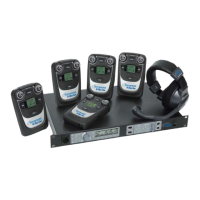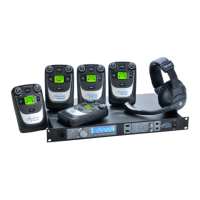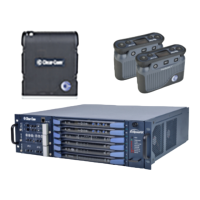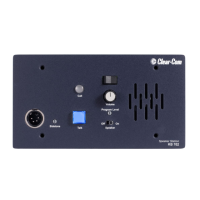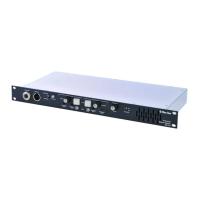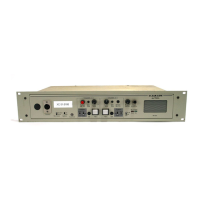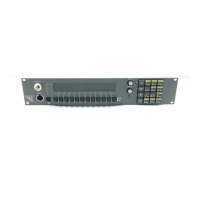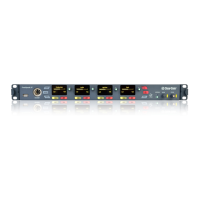52 Tempest®900 4-Channel Wireless Intercom System
Auto-Null Explained
In 2-Wire intercom systems, ineciencies in the hybrid circuitries that combine or separate the send and receive audio signals
onto the same pair of wires inherently cause echo. Within analog systems the echo is not noceable, but when connected to an
extremely sensive digital system, the echo becomes more problemac.
In order to minimize echo resulng from connecon to an external 2-Wire system, it is necessary to opmize the hardware of the
hybrid circuitry in the Tempest BaseStaon. Tempest provides a user iniated AUTO-NULL feature that automacally opmizes
the 2-Wire interface. Nulling only impacts 2-Wire hard wired intercom connecons.
Auto-Null sends a tone to each of the 2-Wire intercom channel connecons. The Tempest Wireless BaseStaon DSP monitors the
echo and adjusts the line characteriscs (Resistance and Capacitance) to opmize the interface to the external 2-Wire system.
When Auto-Null is iniated, all of the funcons of the BaseStaon including communicaon are interrupted. The Auto-Null
process takes approximately 10 seconds. Intercom levels may need to be adjusted aer the 2-Wire intercom lines have been
nulled.
Auto-Null Procedure
Turn OFF all TALK buons on both the wired and wireless systems. Since Tempest monitors a self generated tone to adjust
the null characteriscs, any sounds entering through either the wired or wireless intercom systems will interfere with the
nulling process. When the Auto-Null or Manual Null menu screens are accessed, Tempest sends a Mic Kill signal to all
wireless BeltStaons, but the wired communicaon staons will need to be turned OFF individually, or a hard wired Mic
Kill signal will need to be iniated.
On the Tempest BaseStaon press MENU to open the Main Menu. Rotate the Volume Control to scroll through the menu
opons to the “Wired Intercom Sengs” and select “Auto-Null.” Select “Null Now” to start the Auto-Null process. Normal
funcons will be interrupted for about 10 seconds during the Auto-Null process. Progress of the null process can be
observed on the BaseStaon LCD display.
The BaseStaon display will indicate “Auto-Null Complete” once the Auto-Null process is completed. Press MENU to escape
to the Operaonal screen.
Acvate Auto-Null for new connecons or whenever the 2-Wire system changes signicantly, such as when addional
wired BeltStaons are added or removed, or when cable lengths are changed signicantly.
Test for Echo
Talk into the wireless system for at least 10 seconds to test for echo. Echo Cancellaon (ECAN) soware is disabled in the
Auto-Null and Manual Null screens to ensure the best hardware null. Press MENU to exit the nulling menu screen, and to
enable ECAN. When ECAN is rst enabled, it requires up to 10 seconds for it to achieve convergence. There will usually be
some noceable echo during the rst few seconds of tesng, but it will diminish over me as the ECAN soware converges
to an inaudible level. Brief louder acve audio can help accelerate eciency.
During Auto-Null, wired intercom users will hear the nulling tones and communicaon will
be interrupted. It is recommended that this feature should be used only during setup and
not during live events.
If mulple BaseStaons are connected by 2-Wire intercom connecons, each BaseStaon
must be nulled separately. Null one BaseStaon at a me.
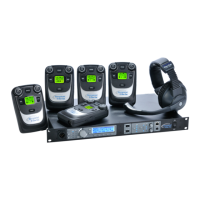
